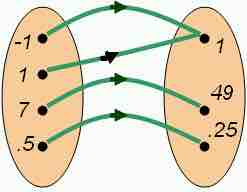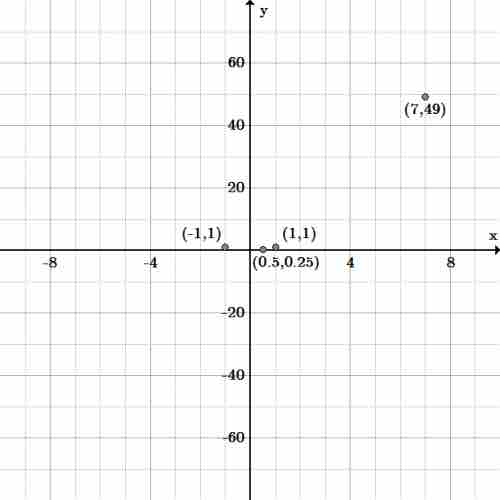What Is the Domain and Range of a Function?
The domain of a function is the set of input values,

Mapping of a Function
The oval on the left is the domain of the function
As you can see in the illustration, each value of the domain has a green arrow to exactly one value of the range. Therefore this mapping is a function.
We can also tell by the set of ordered pairs given in this mapping that it is a function because none of the
We can also tell this mapping, and set of ordered pairs is a function based on the graph of the ordered pairs because the points do not make a vertical line. If an

Ordered pairs
This mapping or set of ordered pairs is a function because the points do not make a vertical line. This is called the vertical line test of a function. It shows that for every input there is exactly one output value.
In addition, the domain of
It is important to note that not all functions have the set of real numbers as their domain. For instance, the function
What about the function
Finding the Domain and Range: Given a Function
In order to find the domain of a function, if it isn't stated to begin with, we need to look at the function definition to determine what values are not allowed. For instance, we know that you cannot take the square root of a negative number, and you cannot divide by
Example 1: Find the domain of:
First, we know we cannot divide by
Solving for
We also know we can't take the square root of a negative number. This means that:
After solving for
Therefore, to find what values are not in the domain, you must find the values where the function is not defined.